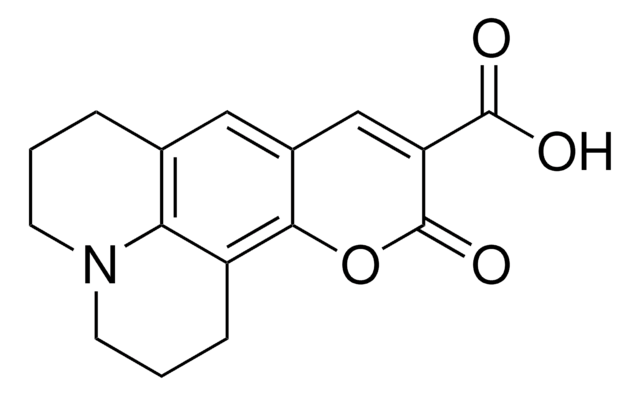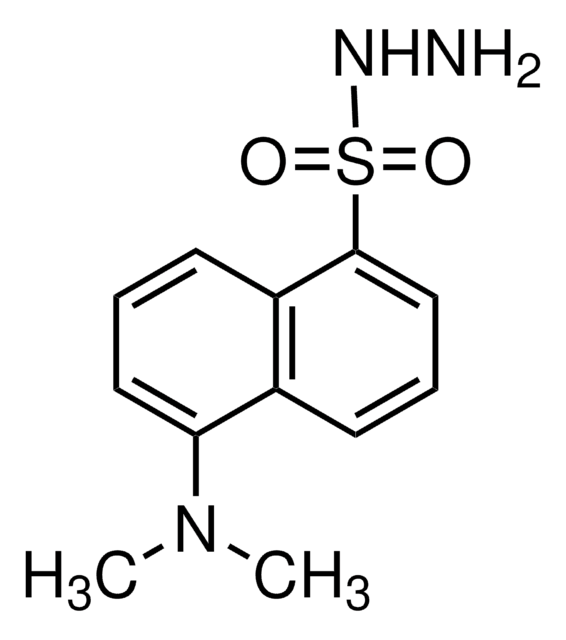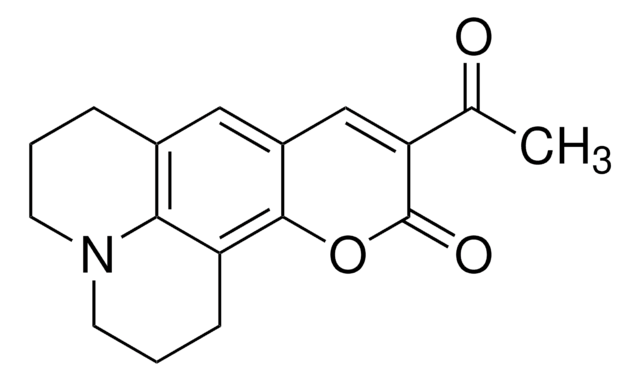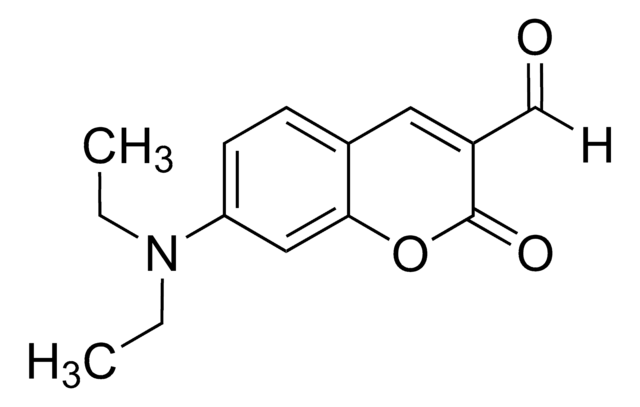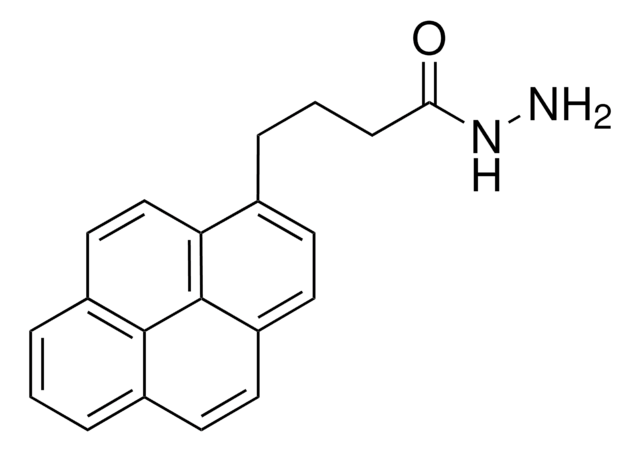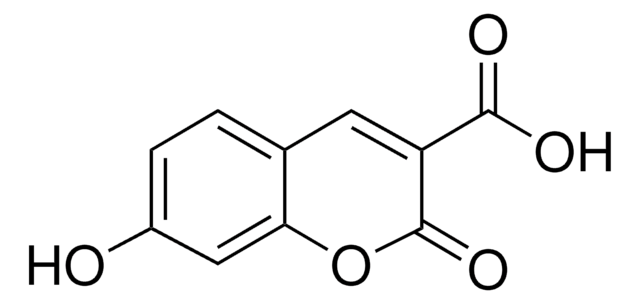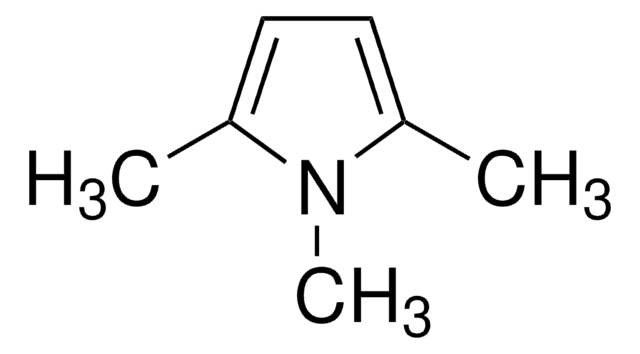36798
7-(Diethylamino)coumarin-3-carbohydrazide
BioReagent, suitable for fluorescence, ≥95% (HPCE)
About This Item
Produtos recomendados
linha de produto
BioReagent
Nível de qualidade
Ensaio
≥95% (HPCE)
solubilidade
DMF: soluble
acetonitrile: soluble
chloroform: soluble
methanol: soluble
fluorescência
λex 450 nm; λem 468 nm in methanol
adequação
suitable for fluorescence
cadeia de caracteres SMILES
CCN(CC)c1ccc2C=C(C(=O)NN)C(=O)Oc2c1
InChI
1S/C14H17N3O3/c1-3-17(4-2)10-6-5-9-7-11(13(18)16-15)14(19)20-12(9)8-10/h5-8H,3-4,15H2,1-2H3,(H,16,18)
chave InChI
LYBMHAINSFEHRL-UHFFFAOYSA-N
Descrição geral
Aplicação
Embalagem
Outras notas
Não está encontrando o produto certo?
Experimente o nosso Ferramenta de seleção de produtos.
Palavra indicadora
Warning
Frases de perigo
Declarações de precaução
Classificações de perigo
Eye Irrit. 2 - Skin Irrit. 2 - STOT SE 3
Órgãos-alvo
Respiratory system
Código de classe de armazenamento
11 - Combustible Solids
Classe de risco de água (WGK)
WGK 3
Ponto de fulgor (°F)
Not applicable
Ponto de fulgor (°C)
Not applicable
Equipamento de proteção individual
dust mask type N95 (US), Eyeshields, Gloves
Escolha uma das versões mais recentes:
Já possui este produto?
Encontre a documentação dos produtos que você adquiriu recentemente na biblioteca de documentos.
Os clientes também visualizaram
Nossa equipe de cientistas tem experiência em todas as áreas de pesquisa, incluindo Life Sciences, ciência de materiais, síntese química, cromatografia, química analítica e muitas outras.
Entre em contato com a assistência técnica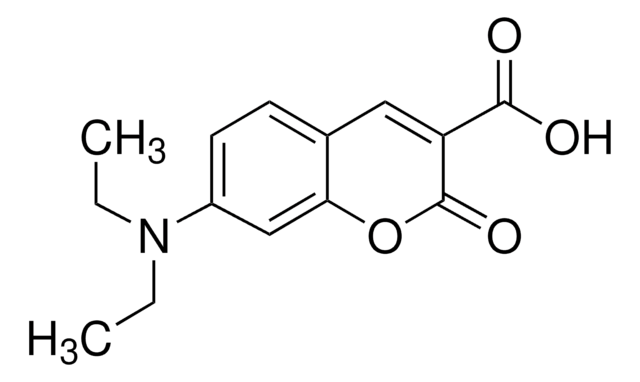
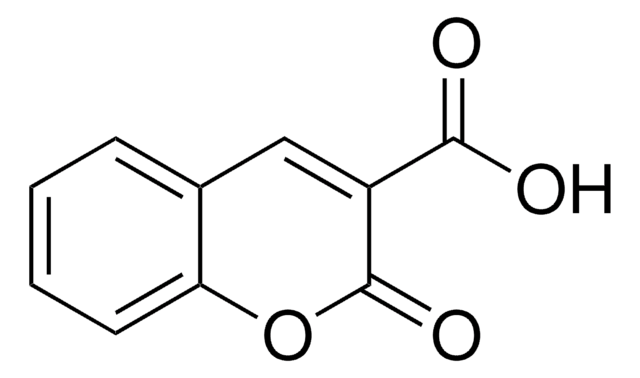
![7-Diethylamino-3-[N-(2-maleimidoethyl)carbamoyl]coumarin suitable for fluorescence, BioReagent, ≥97.0% (HPLC)](/deepweb/assets/sigmaaldrich/product/structures/341/038/a7e0c464-8abe-4eb0-b253-6537f649d89c/640/a7e0c464-8abe-4eb0-b253-6537f649d89c.png)
